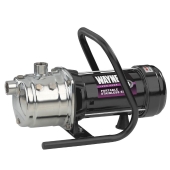
 1
1




 3
3




John Daley Bendigo, Australia The Enemy of progress is the hope of a perfect plan
Benefits of rainfall collection https://permies.com/t/88043/benefits-rainfall-collection
GOOD DEBT/ BAD DEBT https://permies.com/t/179218/mortgages-good-debt-bad-debt




 1
1









 1
1




'Theoretically this level of creeping Orwellian dynamics should ramp up our awareness, but what happens instead is that each alert becomes less and less effective because we're incredibly stupid.' - Jerry Holkins
 1
1




John Daley Bendigo, Australia The Enemy of progress is the hope of a perfect plan
Benefits of rainfall collection https://permies.com/t/88043/benefits-rainfall-collection
GOOD DEBT/ BAD DEBT https://permies.com/t/179218/mortgages-good-debt-bad-debt
 1
1




“The most important decision we make is whether we believe we live in a friendly or hostile universe.”― Albert Einstein
 1
1




John Daley Bendigo, Australia The Enemy of progress is the hope of a perfect plan
Benefits of rainfall collection https://permies.com/t/88043/benefits-rainfall-collection
GOOD DEBT/ BAD DEBT https://permies.com/t/179218/mortgages-good-debt-bad-debt
 1
1




John Weiland wrote:I now have a small Honda semi-trash pump with 2" intake/outlet that is helping me irrigate a garden in a drought period. ... The 2" outlet from the pump is immediately stepped down to a garden hose......
 1
1








At my age, Happy Hour is a nap.




At my age, Happy Hour is a nap.
 1
1




 3
3




 1
1




Douglas Alpenstock wrote:Or pump water, efficiently, to a tank from which you can gravity drain the water (also efficiently).
“The most important decision we make is whether we believe we live in a friendly or hostile universe.”― Albert Einstein
 2
2




John Daley Bendigo, Australia The Enemy of progress is the hope of a perfect plan
Benefits of rainfall collection https://permies.com/t/88043/benefits-rainfall-collection
GOOD DEBT/ BAD DEBT https://permies.com/t/179218/mortgages-good-debt-bad-debt
 2
2




“The most important decision we make is whether we believe we live in a friendly or hostile universe.”― Albert Einstein




At my age, Happy Hour is a nap.
 2
2




John Daley Bendigo, Australia The Enemy of progress is the hope of a perfect plan
Benefits of rainfall collection https://permies.com/t/88043/benefits-rainfall-collection
GOOD DEBT/ BAD DEBT https://permies.com/t/179218/mortgages-good-debt-bad-debt
 1
1




John C Daley wrote: .....JW what good is a clutch when you can just turn off the motor?
Is it hard to start?
“The most important decision we make is whether we believe we live in a friendly or hostile universe.”― Albert Einstein
 1
1








 3
3




Renee Puvvada wrote:...... how much rainwater do you get where you live? Sounds like you're trying to irrigate a garden, and you might be better in luck diverting any rainwater you collect straight to your garden rather than pushing water up from your brook at the bottom of the hill?
bruce Fine wrote:I don't see a float at end of suction pipe , a piece of rope and old bleach bottle will suspend it off bottom and prevent anything but water entering pump. will help to increase pump life.

“The most important decision we make is whether we believe we live in a friendly or hostile universe.”― Albert Einstein








 2
2









|
They weren't very bright, but they were very, very big. Ad contrast:
rocket mass heater risers: materials and design eBook
https://permies.com/w/risers-ebook
|

